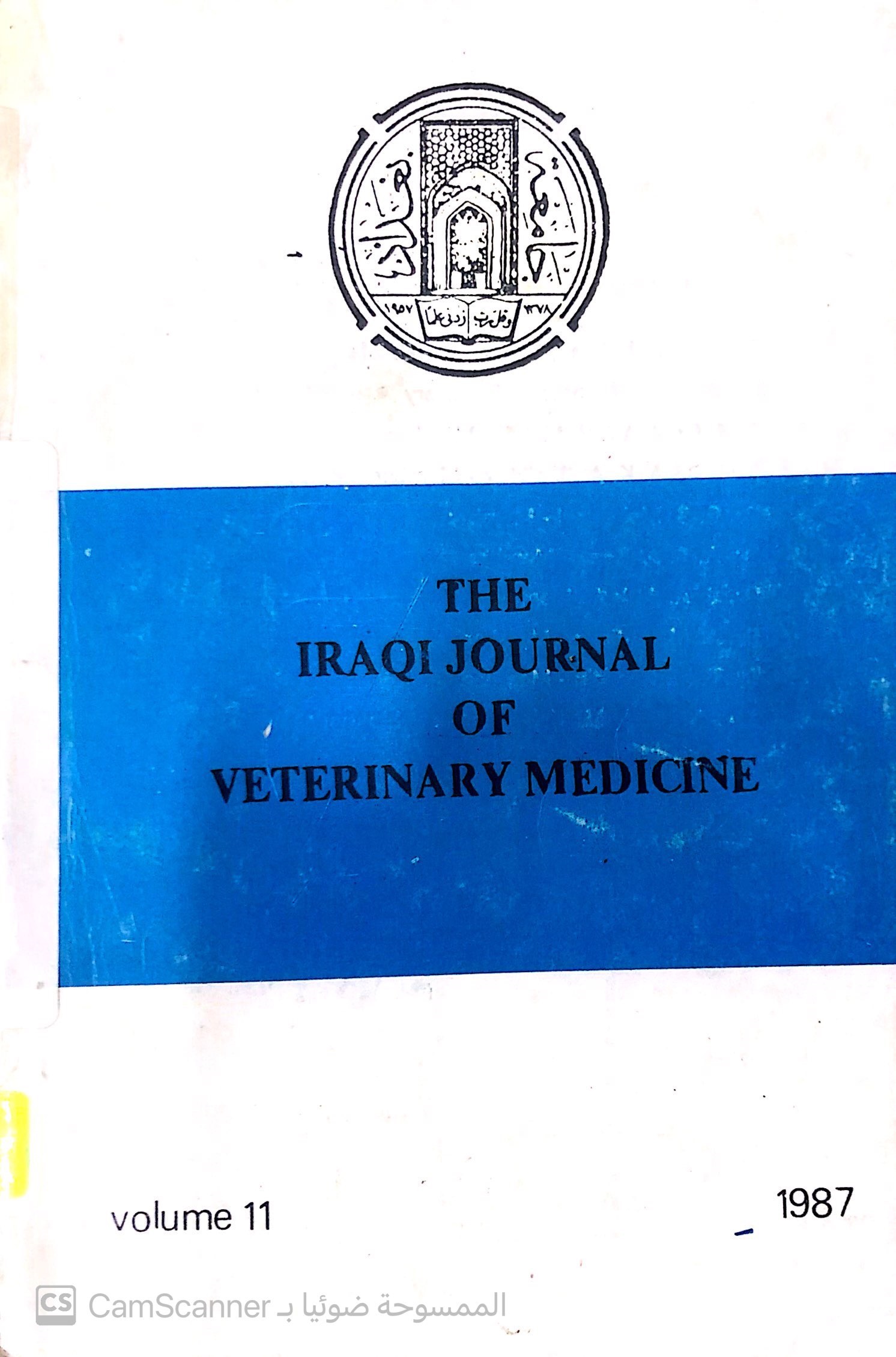EFFECT OF LEAD AND CADMIUM ON IMMUNITY OF TWO VACCINES
Main Article Content
Abstract
This study was performed to investigate the effect of lead exposure on resistance of mice immunized against haemorrhagic septicaemia and challenged with virulent organisms. Lead treated mice showed greater susceptibility to challenge with P. multucida than control especially if lead nitrate is administered orally. this result showed that treatment with lead initials resistance of mice and might interferes with the vaccination programs. Cadmium chloride (cd) injected into rabbits at various time intervals in relation to tetanus toxoid injection was found to have some effect on the immune response. A reduction in the primary immune response was detected in case if (cd) is given two weeks prior to toxoid injection. On the other hand, enhancement of secondary antibody titers was detected. Cadmium reduced both primary and secondary antibody response if it is given seven days before immunization.
Downloads
Article Details
How to Cite
Publication Dates
References
Barkman, D.E.; Sandstead, H.H. and Park, J.H.J. (1970). Biol. Chem. 245: 1036.
Chisolm. J.J. (1971). Lead poisning. Sci. Amer. 224: 15-23.
Choie, D.D. and Richter, G.W. *1972). lead poisoning; rapid formation of intranuclear inclusions, Science, 177: 1194.
Gainer, J.H. (1972). Effect of arsinicals on interferon formation and action. Am. J. Vet. Res. 33: 2067.
Hemphill, F. E. kaeberle, M. L. and Buck, W.B. (1971). Lead suppression of mouse resistance to Salmonella typhimurium. Science, 172: 1031-1032.
Jones, R. H. williams, R. L.; and Jones, A.M. (1971). Effect of heavy metal on the immune response. Preliminary findings for Cadmium in Rats. (35762). Proc. Soc. Exp. Biol. Med. 137: 1231.
Koller, L. D. (1973). Immunosuppression produced by lead, Cadmium and mercury. Am. J. Vet. Res. 34: 1457-1458.
Koller, L.D.; Exon, J. H., and roan, J. G. (1976). Humoral antibody response in mice after single dose exposure to lead and cadmium. Proc. Soc. Exp. Biol. Med.151: 339-342.
Koller, L.D. and Kovacic, S. (1974). Decreased antibody formation in mice: exposed to lead. Nature (London) 250: 148-150. A
Koller, L. D.; and Thigpen. J. E. (1973). Biphenyle- Exposed rabbits. Am. J. Vet. Res. 34: 1605-1606.
McKay, Dz G. (1965). Disseminated intravascular coagulation, An intermediary mechanism of disease. Hoeber Medical Division, harper and Tow -publishers, Inc. New York.
Porter, R.J. (1964). The effect of some Toxic substances. J. Immunol. 92: 425.
Schroeder. H. A. Balassa, J. J. and Vinton, Jr. W.H. (1965). Chromium, Cadmium and lead in rats; Effects on life span, tumors and tissue levels. J. Nutrition 86: 51-66.
Selye, H. Tuchweber, B. and Bertok, L. (1966). Effect of lead acetate on the suscibility of rats to bacterial endotoxins. J. Bacteriol 91: 884-890.
Williams, H. W., Caraway, W. T. and De Young; W. A. (1954). Inactivation of antibodies. Arch. Neurol and Psychiat. 72: 579-582.





